
Tourism Places In sirohisirohi is a nice district situated at the south-western part of Rajasthan. The district derives its name from "Siranwa" hills on the western slope of which it stands. sirohi is one of the fascinating districts of Rajasthan offering some good places of tourist's importance like Mount Abu, Varman , Chandravati, Ajari Temple, Sarvadham Temple, Bamanvadji Temple, Pavapuri Temple etc. Achalgarh 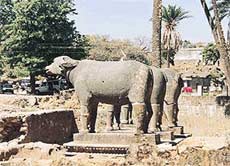 The Shiva Temple of Achaleshwar Mahandeva in Achalgarh boasts a number of interesting features , including what is said to be a toe of Shiva, as well as a brass Nandi (Shiva's vehicle, a bull) and, where the Siva Lingum would normally be, there is a deep hole that is said to extend all the way down to the underworld.
Just outside the temple beside the car park, three stone buffaloes stand around a tank, while the figure of a King shoots at them with his bows and arrows. A legend states that the tank was once filled with ghee, but demons, in the form of buffalos came down and polluted the ghee until the king shot them. A path leads up to the hillside to a group of colorful Jain temples, which all have fine views over the plains.
The Shiva Temple of Achaleshwar Mahandeva in Achalgarh boasts a number of interesting features , including what is said to be a toe of Shiva, as well as a brass Nandi (Shiva's vehicle, a bull) and, where the Siva Lingum would normally be, there is a deep hole that is said to extend all the way down to the underworld.
Just outside the temple beside the car park, three stone buffaloes stand around a tank, while the figure of a King shoots at them with his bows and arrows. A legend states that the tank was once filled with ghee, but demons, in the form of buffalos came down and polluted the ghee until the king shot them. A path leads up to the hillside to a group of colorful Jain temples, which all have fine views over the plains.Vasant Garh 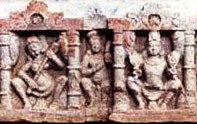 This place is eight km to the South of Pindwara, is situated on a river named Sarasvati. Its old names, as known from various sources, were Vetaleara, Vatasthana, Vatanagra, Vata, Vatapura and Vasisthapura. This place was called Vata on account of the banian trees, which are found in abundance.
This place is eight km to the South of Pindwara, is situated on a river named Sarasvati. Its old names, as known from various sources, were Vetaleara, Vatasthana, Vatanagra, Vata, Vatapura and Vasisthapura. This place was called Vata on account of the banian trees, which are found in abundance. The Sun Temple of Varman Thus temple is known, as the Brahman-Svamin is one of the most famous temples in India. The careful finish of its carving, the proportion of its members and the parsimonious use of decorative detail, all tend to show that it must have been constructed at a time when the temple architecture was a vitally living art. Sarneshwar Temple This temple is dedicated to Lord Shiv, situated on the western slope of Siranwa hill and is now managed by sirohi Devasthanam. It is Kuldev of Deora Clan of Chauhans of sirohi. The temple was built during Parmar Dynasty. Chandravati It is situated at 6 kms away from Abu Road on Abu - Ahmedabad Highway. It is destroyed city of Parmars. Its present name is Chandela. In the 10th and 11th century Chandravati was the capital of the Parmars. It was the main centre of the nagar civilization and business and trade. It was a great example from Architect point of view. Jiraval Temple 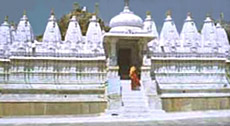 This temple is situated in the middle of the Jairaj Hill on the Aravali Ranges. The Jiraval temple is very primitive and ancient. The temple is surrounded by the Dharamshalas and beautiful buildings. The importance of this temple is unique because all over world installation of Jain temples are made with the name of this temple om hrim shri jiravala parshavnathay namah.
This temple is situated in the middle of the Jairaj Hill on the Aravali Ranges. The Jiraval temple is very primitive and ancient. The temple is surrounded by the Dharamshalas and beautiful buildings. The importance of this temple is unique because all over world installation of Jain temples are made with the name of this temple om hrim shri jiravala parshavnathay namah. Bamanvad Ji Temple This temple is dedicated to Lord Mahavir 24th Tirthankara of Jains. The temple is said to be built by Nandi Vardhan, brother of Lord Mahavir. Mirpur Temple Mirpur temple is considered to be the oldest marble monument of Rajasthan. It served as a modal for Dilwara and Ranakpur temples. It is depicted in world encyclopedia art. The temple is of Rajput age of 9th century. The temple is dedicated to Lord Parshavnath, the 23 Tirthankaras of Jains. The temple was destroyed by Mahmood Begda of Gujarat in 13th century and was rebuilt and renovated in 15th century. Ajari Temple 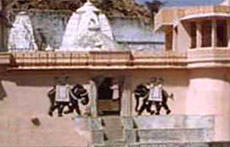 This temple is about 5 kms south of Pindwara on the way to Abu Road, is the village of Ajari. It is a temple of Mahadev and Saraswati. The scenery is picturesque, honey-combed with date-trees and a small rivulet flows nearby. Small hillocks form a wonderful background. The place is a fine picnic spot.
This temple is about 5 kms south of Pindwara on the way to Abu Road, is the village of Ajari. It is a temple of Mahadev and Saraswati. The scenery is picturesque, honey-combed with date-trees and a small rivulet flows nearby. Small hillocks form a wonderful background. The place is a fine picnic spot. Sarvadham Temple This temple is dedicated to all religions of the world. It is located at the Headquarter of sirohi and is one km far from the circuit house of sirohi. The site, temple architecture, layout of the landscape is fine. Trees of religious importance like Rudraksh, Kalpvriksh, Kunj, Harsingar, Belpatra (tree and scriper) are planted here. Saffron plantation is also seen here. The main attraction of this temple is the idols of various gods installed around, inside and top of the temple. This temple can be considered as the monument of the modern century, which provides the feelings of National Integration and Harmony. Temple Street Eighteen Jain temples are situated in one single row form the temple street. Some temples are magnificent, huge and important from the architect viewpoint. The highest temple is Chaumukha is dedicated to Adinath, the first Tirthankara of Jain. The Structure of this temple is similar to Ranakpur standing on pillars. It is situated on western slope of the Siranwa hills and represented by 78 ft high. The temple can be seen from very far distant from the sirohi. Sitting on the highest top of the temple, the scene of sunset and the natural beauty of the fields and landscape of the sirohi city and nearby locations can be enjoyed. Karodi Dhwaj Temple 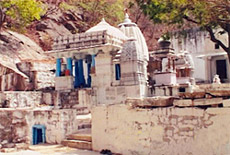 This place can be reached from Abu downhills about 4 kms as well as from sirohi via Anadara, a distance of about 32 kms south of sirohi town. This temple is dedicated to Lord Sun, who has millions of rays (Kotidwaj). The temple is said to be built by the Hoons who were the worshippers of Sun.
This place can be reached from Abu downhills about 4 kms as well as from sirohi via Anadara, a distance of about 32 kms south of sirohi town. This temple is dedicated to Lord Sun, who has millions of rays (Kotidwaj). The temple is said to be built by the Hoons who were the worshippers of Sun. Pavapuri Temple The "Pavapuri Tirtha Dham" temple is Trust". Constructed separated in two blocks first one is Sumati Jeevandaya Dhaam is also named Gou-Shala and second is Pavapuri Dhaam. The main attraction of the Dhaam is the temple and the toran gate. The Bheru Tarak Dham 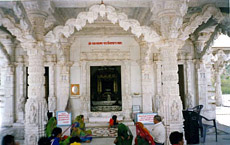 It is established in the valley of Nandgiri. The temple is built of while marble dedicated to Shahastra Fana of Parshavnath. The campus is having Dharamshala, BhojanShala and having all facilities for religious tourists.
It is established in the valley of Nandgiri. The temple is built of while marble dedicated to Shahastra Fana of Parshavnath. The campus is having Dharamshala, BhojanShala and having all facilities for religious tourists.
Ambeshwar Ji Temple A place about six miles north of sirohi on a sidetrack of the National Highway No. 14 from sirohi to Sheoganj. The Kolargarh is situated towards eastern side at a distance of 2 kms. The relics of old fort on Ganesh pole can be seen here. There is a Dharamshala, a Jain temple, Laxmi Narayan temple, Shiv temple and Gorakhmath are also present. On the hill after climbing 400 steps an ancient temple Lord Shiv with its natural beauty and marvelous surroundings with waterfalls can be seen. Mount Abu 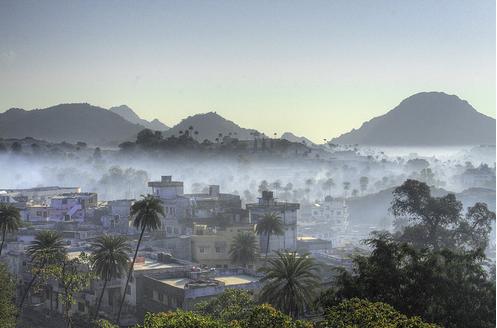 Mount Abu is a green oasis in the barren deserts cape that's Rajasthan. Situated at the southern tip of the Aravali range, the hill retreat owes its cool climate to its rich flora covering the entire hillside that includes coniferous trees and flowering shrubs. The road leading to Mount Abu is a curved one that is characterised by arid region dotted with huge rocks in weird shapes and high velocity winds. Abu according to a legend, stands for the son of Himalaya, deriving its name from Arbuada, the powerful serpent who rescued Nandi, the sacred bull of Lord Shiva, from a chasm. Mount Abu has been home to many sages and saints.
Mount Abu is Rajasthan's only hill station sprawling along a 4000ft high plateau in the south of the state, close to the Gujarat border. Known for its exquisite Dilwara Jain temples, this pretty hill station stands atop the Aravalli ranges. Mount Abu receives around 15 lakh tourists every year. It is situated in sirohi district, 29 km away from Abu Road Railway Station and 220 km from Jodhpur.
Myth, History, and culture have been closely connected with this hill station. 'Abu' literally means the 'son of the Himalayas'. The legend behind this hill station is that a huge yagna (sacrificial invocations) was conducted by Sage Vashishta, who created four Agnikuls Rajput clans (Chauhans, Parmars, Pratihars and Solankis) out of the sacred flames to protect the earth from demons.
Mount Abu has an extensive history. Earlier, it was ruled by Chauhan Dynasty. Thereafter, it was leased by the British Government from the Maharaja of sirohi and used as the Summer Retreat of the agent to the Governor General of Rajputana.
Among the exotic flora found in Mount Abu are herbal medicines, flowering trees, Orchids, species of wild roses, Ferns, Climbers, Shrubs, etc. Sloth bear, Panther, Sambhar, Jungle cat, Wolf, Hyena, Wild boar, Grey jungle fowl, Porcupine and Myriad birds (150 species) etc are some fauna founds in Mount Abu.
It is also famous for Lothian Golf Club, one of the oldest golf clubs in the world.
Mount Abu is an excellent trekking base. Adventure and eco tourism is best known here with multiple treks, nature camps, rock climbing and nature trails. One can explore the Tiger Path, Craig's Path, Sunset Point, Arna-Chhipaberi, Gaumukh-Bagheri, etc.
Mount Abu is a green oasis in the barren deserts cape that's Rajasthan. Situated at the southern tip of the Aravali range, the hill retreat owes its cool climate to its rich flora covering the entire hillside that includes coniferous trees and flowering shrubs. The road leading to Mount Abu is a curved one that is characterised by arid region dotted with huge rocks in weird shapes and high velocity winds. Abu according to a legend, stands for the son of Himalaya, deriving its name from Arbuada, the powerful serpent who rescued Nandi, the sacred bull of Lord Shiva, from a chasm. Mount Abu has been home to many sages and saints.
Mount Abu is Rajasthan's only hill station sprawling along a 4000ft high plateau in the south of the state, close to the Gujarat border. Known for its exquisite Dilwara Jain temples, this pretty hill station stands atop the Aravalli ranges. Mount Abu receives around 15 lakh tourists every year. It is situated in sirohi district, 29 km away from Abu Road Railway Station and 220 km from Jodhpur.
Myth, History, and culture have been closely connected with this hill station. 'Abu' literally means the 'son of the Himalayas'. The legend behind this hill station is that a huge yagna (sacrificial invocations) was conducted by Sage Vashishta, who created four Agnikuls Rajput clans (Chauhans, Parmars, Pratihars and Solankis) out of the sacred flames to protect the earth from demons.
Mount Abu has an extensive history. Earlier, it was ruled by Chauhan Dynasty. Thereafter, it was leased by the British Government from the Maharaja of sirohi and used as the Summer Retreat of the agent to the Governor General of Rajputana.
Among the exotic flora found in Mount Abu are herbal medicines, flowering trees, Orchids, species of wild roses, Ferns, Climbers, Shrubs, etc. Sloth bear, Panther, Sambhar, Jungle cat, Wolf, Hyena, Wild boar, Grey jungle fowl, Porcupine and Myriad birds (150 species) etc are some fauna founds in Mount Abu.
It is also famous for Lothian Golf Club, one of the oldest golf clubs in the world.
Mount Abu is an excellent trekking base. Adventure and eco tourism is best known here with multiple treks, nature camps, rock climbing and nature trails. One can explore the Tiger Path, Craig's Path, Sunset Point, Arna-Chhipaberi, Gaumukh-Bagheri, etc.
Mount Abu History 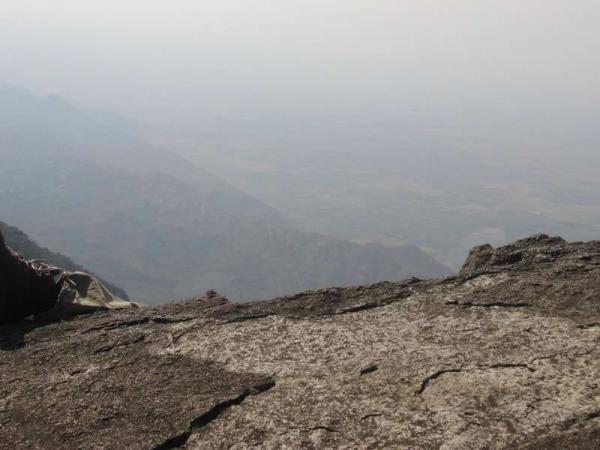 The history of Mount Abu is as diverse as the city itself. It was once a part of the Chauhan kingdom of Rajasthan and served as a summer resort for the Rajput kings of the region. After that, it was leased by the British government from the then Maharaja of sirohi for use as the headquarter of the resident to Rajputana (another name for Rajasthan).
During the British rule in India, it was the favorite summer destination of the British, who came here to escape the dusty, dry heat of the plains particularly Rajasthan. It also served as a sanatorium for the troops. The small huts and cottages here tell stories of those times even today.
Mount Abu was the home of many saints and sages in the old days. Legend has it that all the 330 million gods and goddesses of the Hindu pantheon used to visit this holy mountain. It is also the place where the great saint Vashishth lived and performed a yagna (sacrificial worship on a fire pit) to create four Agnikula (four clans of fire) to protect the earth from demons. The yagna was supposed to have been performed near a natural spring, which emerged from a rock shaped like a cow's head.
According to another legend, once sage Vashishth's cow Nandini was trapped in a deep gorge and could not free herself. The sage appealed to Lord Shiva for assistance. The Lord sent Saraswati, the divine stream, to help flood the gorge so that the cow could float up. Vashishth then decided to ensure that such mishaps did not occur in future. He asked the youngest son of Himalaya, the king of mountains to fill the chasm permanently. This he did with the assistance of Arbud, the mighty snake. This spot came to be known as Mount Arbud and was later changed to its present form - Mount Abu.
This place is held in reverence by Jains as well since Jain scriptures record that Lord Mahavira, the 24th Jain Tirthankar (spiritual leader), also visited Mount Abu and blessed the city.
The history of Mount Abu is as diverse as the city itself. It was once a part of the Chauhan kingdom of Rajasthan and served as a summer resort for the Rajput kings of the region. After that, it was leased by the British government from the then Maharaja of sirohi for use as the headquarter of the resident to Rajputana (another name for Rajasthan).
During the British rule in India, it was the favorite summer destination of the British, who came here to escape the dusty, dry heat of the plains particularly Rajasthan. It also served as a sanatorium for the troops. The small huts and cottages here tell stories of those times even today.
Mount Abu was the home of many saints and sages in the old days. Legend has it that all the 330 million gods and goddesses of the Hindu pantheon used to visit this holy mountain. It is also the place where the great saint Vashishth lived and performed a yagna (sacrificial worship on a fire pit) to create four Agnikula (four clans of fire) to protect the earth from demons. The yagna was supposed to have been performed near a natural spring, which emerged from a rock shaped like a cow's head.
According to another legend, once sage Vashishth's cow Nandini was trapped in a deep gorge and could not free herself. The sage appealed to Lord Shiva for assistance. The Lord sent Saraswati, the divine stream, to help flood the gorge so that the cow could float up. Vashishth then decided to ensure that such mishaps did not occur in future. He asked the youngest son of Himalaya, the king of mountains to fill the chasm permanently. This he did with the assistance of Arbud, the mighty snake. This spot came to be known as Mount Arbud and was later changed to its present form - Mount Abu.
This place is held in reverence by Jains as well since Jain scriptures record that Lord Mahavira, the 24th Jain Tirthankar (spiritual leader), also visited Mount Abu and blessed the city.
Tourist places in Mount Abu Gaumukh Temple 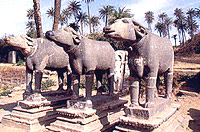 Down on the Abu Road side of Mount Abu a small stream flows from the mouth of a marble cow, giving the shrine its name. There is also a marble figure of the bull Nandi, Shiva's vehicle. The tank here, Agni Kund, is said to be the site of the sacrificial fire, made by sage Vashistha, from which four of the great Rajput clans were born. An image of Vashishtha is flanked by the figures of Rama and Krishna.
To reach the temple you have to take a path with 750 steps down to the valley.
Down on the Abu Road side of Mount Abu a small stream flows from the mouth of a marble cow, giving the shrine its name. There is also a marble figure of the bull Nandi, Shiva's vehicle. The tank here, Agni Kund, is said to be the site of the sacrificial fire, made by sage Vashistha, from which four of the great Rajput clans were born. An image of Vashishtha is flanked by the figures of Rama and Krishna.
To reach the temple you have to take a path with 750 steps down to the valley.
Adhar Devi Temple The Adhar Devi temple, about 3km north of town, is chiseled out of a huge rock reached by a flight of 365 steps. You have to stoop to get through the low entrance of the temple. It is a favorite tourist spot. Delwara Jain Temples 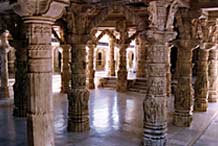 The Temple complex includes two temples with exquisite marble carvings. The older of the temples is the Vimal Vasahi, built in 1031 by a Gujrati minister named Vimal. It is dedicated to the first tirthankar (Jain Teacher), Adinath. The central shrine contains an image of Adinath, while around the courtyard are 57 identical cells, each with a Budhdha like cross-legged image. Forty eight elegantly carved pillars from the entrance to the courtyard. In front of the temple stands the House of Elephants, with figures of elephants marching in procession to the temple.
The later Tejpal Temple is dedicated to Neminath, the 22nd tirthankar, and was built in1231 by the brothers Tejpal and Vastupal. Like Vimal, they were ministers in the government of the ruler of Gujarat. Although the Tejpal temple is important as an extremely old and complete example of Jain temple, its most notable feature is the intricacy and delicacy of the marble carving. It is so fine that, in places, the marble becomes almost transparent. In particular the lotus flower that hangs from the center of the dome is an incredible piece of work. It is difficult to believe that the huge lacelike filigree started as a solid block of marble. The temple employs several full-time stone carvers to maintain and restore the work.
There are three other temples in the enclosure, but they are pale beside the Tejpal temple and Vimal Vasahi.
The Temple complex includes two temples with exquisite marble carvings. The older of the temples is the Vimal Vasahi, built in 1031 by a Gujrati minister named Vimal. It is dedicated to the first tirthankar (Jain Teacher), Adinath. The central shrine contains an image of Adinath, while around the courtyard are 57 identical cells, each with a Budhdha like cross-legged image. Forty eight elegantly carved pillars from the entrance to the courtyard. In front of the temple stands the House of Elephants, with figures of elephants marching in procession to the temple.
The later Tejpal Temple is dedicated to Neminath, the 22nd tirthankar, and was built in1231 by the brothers Tejpal and Vastupal. Like Vimal, they were ministers in the government of the ruler of Gujarat. Although the Tejpal temple is important as an extremely old and complete example of Jain temple, its most notable feature is the intricacy and delicacy of the marble carving. It is so fine that, in places, the marble becomes almost transparent. In particular the lotus flower that hangs from the center of the dome is an incredible piece of work. It is difficult to believe that the huge lacelike filigree started as a solid block of marble. The temple employs several full-time stone carvers to maintain and restore the work.
There are three other temples in the enclosure, but they are pale beside the Tejpal temple and Vimal Vasahi.
Shri Raghunathji Temple Situated near the 'Nakki' lake is the temple dedicated to Shri Raghunathji with a beautiful image of the deity that was placed here in 14th century A.D. by Shri Ramanand the famous Hindu preacher. Gardens & Parks 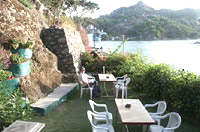 Beautifully laid parks and gardens are interspersed throughout the hilly paradise. Ashok Vatika,Gandhi park, Municipal Park, Shaitan Singh Park and Terrace Garden are some of the noteworthy gardens.
Another park, the Brahma Kumaris Peace Park is both lovely and serene, It is the realisation of a dream, a natural environment where silence and recreation co-exist, The Peace Park is nestled between two famous peaks of the Aravalli hills - the well known spiritual pilgrimage destinations of Guru Shikhar and Achal Garh. The Park Is an oasis of natural beauty found only 8 kms from the Brahma Kumaris Headquarters in Mount Abu.
Beautifully laid parks and gardens are interspersed throughout the hilly paradise. Ashok Vatika,Gandhi park, Municipal Park, Shaitan Singh Park and Terrace Garden are some of the noteworthy gardens.
Another park, the Brahma Kumaris Peace Park is both lovely and serene, It is the realisation of a dream, a natural environment where silence and recreation co-exist, The Peace Park is nestled between two famous peaks of the Aravalli hills - the well known spiritual pilgrimage destinations of Guru Shikhar and Achal Garh. The Park Is an oasis of natural beauty found only 8 kms from the Brahma Kumaris Headquarters in Mount Abu.Trevor's Tank Named after the British engineer who constructed it, Trevor's Tank is a delight for bird watchers with densely wooded hills that are a haven to pigeons, peacocks and partridges. Guru Shikhar 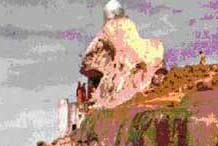 Guru Shikar is 15km from Mount Abu At the end of the plateau and the highest point in Rajasthan at 1722m. A road goes almost all the way to the summit. At the top is the Atri Rishi Temple, complete with a priest and good views all around.
Guru Shikar is 15km from Mount Abu At the end of the plateau and the highest point in Rajasthan at 1722m. A road goes almost all the way to the summit. At the top is the Atri Rishi Temple, complete with a priest and good views all around.
Museum & Art Gallery The museum is divided into two sections. The first section has been adorned by a diorama of local tribal hut with their usual living style by adding a gallery of weapons, musical instruments, ladies ornaments like barly, damani, karna, guthma toda, gaga wala thoomar, kanksi berla, various type of earrings and garments etc. belonging to hill dwellers. The second section has a series of miniature paintings based on raga-ragnis, lain images from sirohi, medium sized shields, a small canon called 'Topdi' and some pieces of carvings on local wood. The notable collection of this museum, is the finely carved out statues of Devdasi or Nartakis (Dancer) ranging from 6th century A.D. to 12th century A.D. procured from an ancient township called Chandravati, 7 kms away from Abu. There is an image of the Chakrabahu Shiva having a trishul in one hand and a khadag in the other and sitting on Nandi, the bull. On each side of Shiva are dancing girls. In the Abu collection consisting of 404 sculptures, the most distinctive exhibit is the Vish Kanya (snake goddess) which is 3 feet high. It is shown breast-feeding a snake. The figures are well executed and the attitudes are impressive and natural. It also has the Surya (8th century A.D.) found in Achalgarh, the Shiva (10th century A.D.) brought from Delwara temple. The Chanvar Vahini and Laxmi (12th century A.D.) also from Chandravati and the Chanmunda (8th century A. D.). Nakki Lake 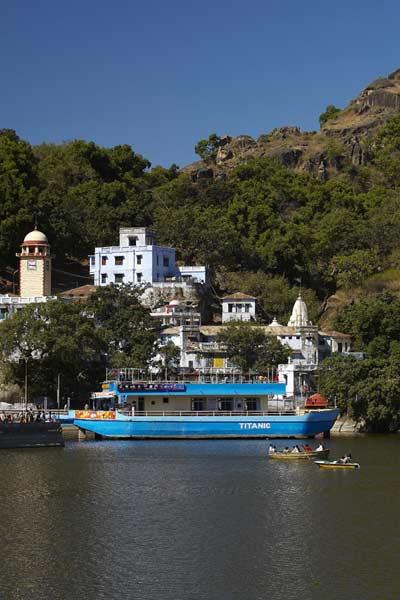 Nakki Lake is a very nice lake in mount abu it's Innumerable attributes are crowned on the head of this intriguing lake. For diehard Abuphills it founts from the centre of the earth! On one hand if it is the largest manmade lake at the height of 11, 00 meters in India then on the other hand it is romantically called the love lake of Mount Abu at the same time it is the sacred lake for the proud Garacia tribe. The later come to the lake on their festival in Shukla Paksha in April to worship and remember their ancestors, and consecrate their nails, (hence one more reason for the name Nakki).
The name Nakki is also derived form the romantic story of the aged sage Rasia Balam and the nubile teenager Kunvanri Kanya. The two lovelorn souls were prevented from tying their love in a nuptial knot, by the scheming parents and their conniving Gods. They had demanded that the sage could marry the teenager if he could dig up a lake for her with his nails over night. The sage was just about to accomplish the impossible feat when he was betrayed by all. It is said that the sage was the incarnation of Lord Shiva and the teenager was the embodiment of Ma Parvati. It is predicted that they would return again and then there would be upheaval in the universe. The poem 'Lost Love' depicts the pathos of the two.
Nakki Lake is a very nice lake in mount abu it's Innumerable attributes are crowned on the head of this intriguing lake. For diehard Abuphills it founts from the centre of the earth! On one hand if it is the largest manmade lake at the height of 11, 00 meters in India then on the other hand it is romantically called the love lake of Mount Abu at the same time it is the sacred lake for the proud Garacia tribe. The later come to the lake on their festival in Shukla Paksha in April to worship and remember their ancestors, and consecrate their nails, (hence one more reason for the name Nakki).
The name Nakki is also derived form the romantic story of the aged sage Rasia Balam and the nubile teenager Kunvanri Kanya. The two lovelorn souls were prevented from tying their love in a nuptial knot, by the scheming parents and their conniving Gods. They had demanded that the sage could marry the teenager if he could dig up a lake for her with his nails over night. The sage was just about to accomplish the impossible feat when he was betrayed by all. It is said that the sage was the incarnation of Lord Shiva and the teenager was the embodiment of Ma Parvati. It is predicted that they would return again and then there would be upheaval in the universe. The poem 'Lost Love' depicts the pathos of the two.
Wild Life Sanctuary Mount Abu Wildlife sanctuary comprises of Aravalli, the oldest mountain range. Declared as a Wildlife Sanctuary in 1960, it has numerous places for sightseeing. The floral biodiversity of the sanctuary is quite rich starting with xenomorphic subtropical thorn forest at the foothills to subtropical evergreen forest along watercourses and valleys at higher altitudes. 112 plant families with 449 genera and 820 species fill up the sanctuary. Some of the 3 species of wild roses and 16 species of feras seen here are quite rare. In the southwest area, the sanctuary abounds in bamboo forests. For More detail about Mount Abu Please Click here |

